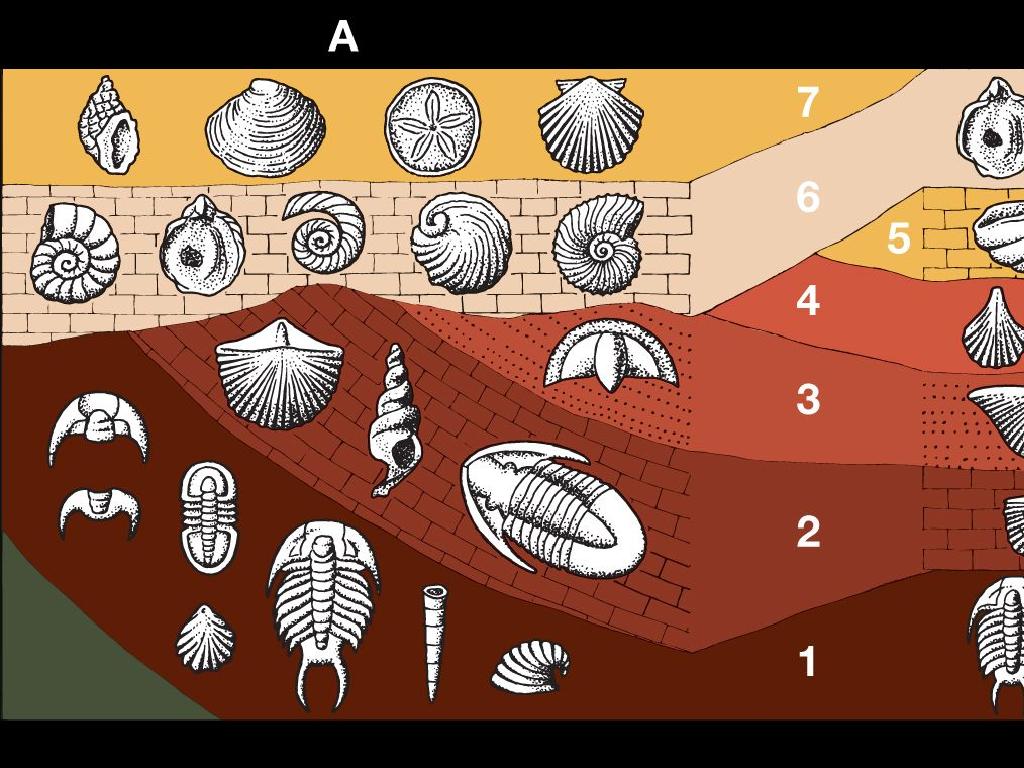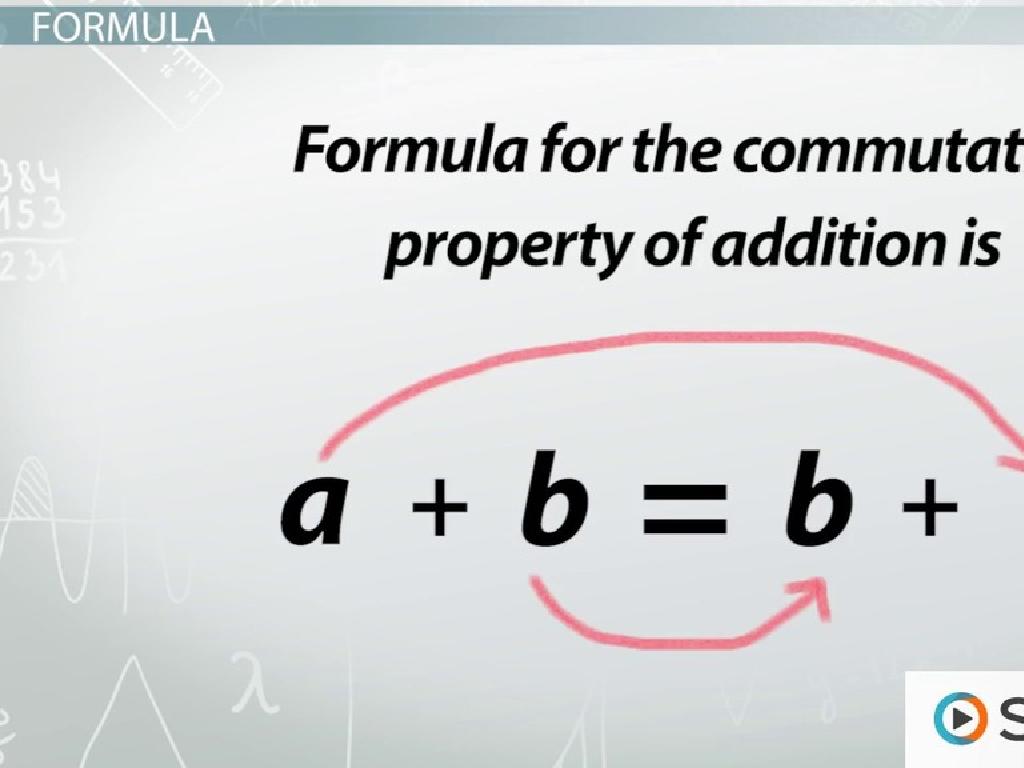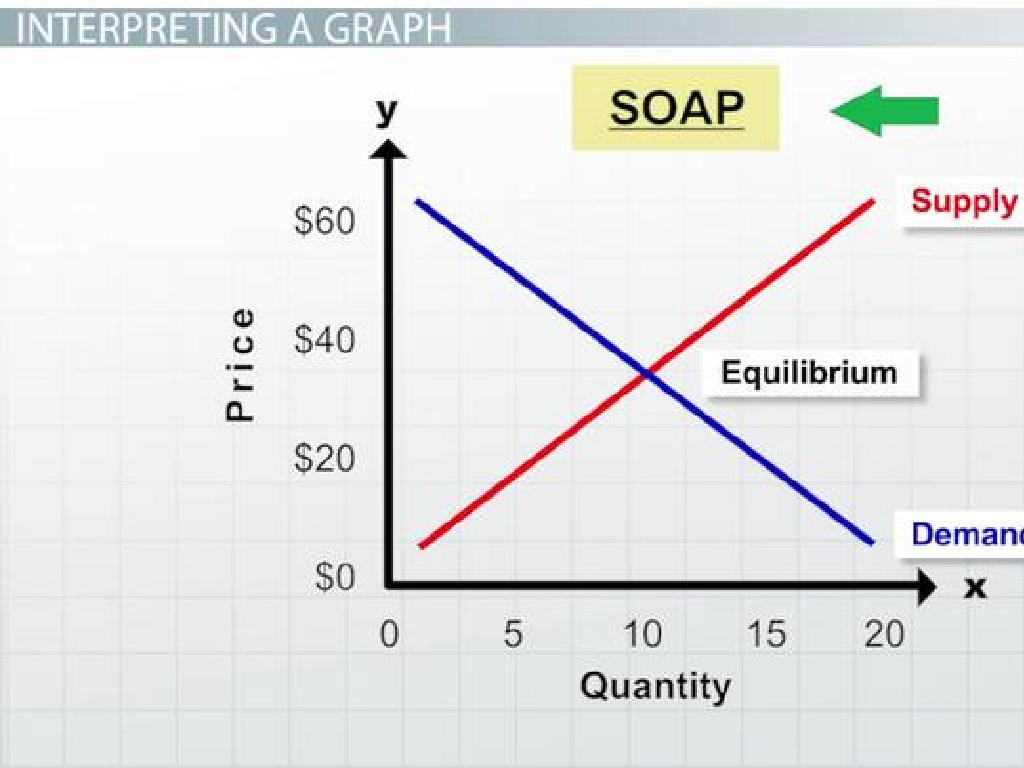Use Possessive Pronouns
Subject: Language arts
Grade: Fifth grade
Topic: Pronouns
Please LOG IN to download the presentation. Access is available to registered users only.
View More Content
Possessive Pronouns: Yours, Mine, and Ours
– Understanding possessive pronouns
– They show who owns something without naming the owner, like ‘mine’, ‘yours’, ‘hers’.
– The role of pronouns in sentences
– Pronouns replace nouns to avoid repetition and make sentences clearer.
– Examples of possessive pronouns
– ‘The book is mine.’ ‘Is that pencil yours?’ ‘The cat cleaned its whiskers.’
– Practice using possessive pronouns
|
This slide introduces possessive pronouns, which are used to show ownership and avoid repeating nouns. Explain that possessive pronouns make sentences less cumbersome and more interesting by not overusing names. Provide examples to illustrate how possessive pronouns are used in place of nouns to show who owns something. Encourage students to come up with their own sentences using possessive pronouns to reinforce their understanding. In the next class, plan activities where students can practice using possessive pronouns in different contexts to solidify their grasp of the concept.
Understanding Possessive Pronouns
– Define Possessive Pronouns
– Words that show who owns something
– Examples: ‘mine’, ‘yours’, ‘his’
– ‘That book is mine.’ ‘Is that pen yours?’
– ‘hers’, ‘ours’, ‘theirs’
– ‘The choice is hers.’ ‘The victory is ours!’
– Possessive Pronouns vs. Adjectives
– Pronouns replace nouns, adjectives describe them
|
This slide introduces possessive pronouns, which are used to indicate ownership without repeating the noun. Provide clear examples for each pronoun, ensuring students understand the difference between pronouns and possessive adjectives. Possessive pronouns stand alone, while possessive adjectives must be followed by a noun. Activities can include identifying possessive pronouns in sentences and converting sentences with possessive adjectives to ones with possessive pronouns. Encourage students to create sentences using each possessive pronoun to reinforce their understanding.
Mastering Possessive Pronouns
– Replacing nouns with possessive pronouns
– Possessive pronouns show ownership, like ‘my’, ‘your’, ‘his’, ‘her’, ‘its’, ‘our’, ‘their’
– ‘The book of John’ turns into ‘His book’
– Instead of saying ‘the book of John’, we say ‘his book’ to show that the book belongs to John
– Use possessive pronouns to avoid repetition
– They help make sentences shorter and avoid saying the same nouns over and over
– Practice makes perfect with pronouns
|
This slide aims to teach students how to use possessive pronouns effectively in their writing. Start by explaining that possessive pronouns are used to show ownership and can replace nouns to make sentences clearer and less repetitive. Provide examples of possessive pronouns and demonstrate how to transform phrases like ‘the book of John’ into ‘his book’. Emphasize the importance of using possessive pronouns to make writing more concise and engaging. Encourage students to practice by rewriting sentences with possessive pronouns and to share their examples in class. This will help them grasp the concept and apply it in their daily writing.
Possessive Pronouns in Action
– Read the comic strip aloud
– Spot the possessive pronouns
– Words like ‘his’, ‘her’, ‘their’ show who owns something
– Discuss the pronoun usage
– Why was ‘her’ used instead of ‘his’? Context matters!
– Understand pronoun choices
|
This slide is designed for an interactive class activity focused on possessive pronouns. Start by having students read a comic strip aloud to the class. As they read, ask them to identify possessive pronouns such as ‘my’, ‘your’, ‘his’, ‘her’, ‘its’, ‘our’, and ‘their’. After identifying these pronouns, engage the class in a discussion about why each pronoun was used, considering the context within the comic strip. This will help students understand the importance of context in choosing the correct possessive pronoun. Encourage students to think about the relationship between the noun and the pronoun to determine ownership or association. The goal is for students to recognize possessive pronouns in use and understand their function in showing possession.
Your Turn: Possessive Pronouns Practice
– Fill in blanks with possessive pronouns
– Share answers with a classmate
– Exchange your worksheet and compare answers
– Discuss answers as a class
– We’ll review the answers together in class
– Understand use of possessive pronouns
– This helps us learn how to use ‘my’, ‘your’, ‘his’, ‘her’, ‘its’, ‘our’, ‘their’
|
This slide is designed to engage students in a practical exercise using possessive pronouns. Students will first complete a worksheet where they fill in the blanks with the correct possessive pronouns. Afterward, they should pair up with a classmate to share and compare their answers, fostering peer learning. Finally, the class will come together for a discussion, led by the teacher, to go over the answers and clarify any misunderstandings. This activity will reinforce the concept of possessive pronouns and their correct usage in sentences. As a teacher, be prepared with additional examples and common mistakes to look out for. Encourage students to explain their reasoning during the discussion to deepen their understanding.
Possessive Pronoun Game
– Let’s play a fun game!
– Move around the board with pronouns
– Each space requires a sentence with a possessive pronoun
– Use possessive pronouns correctly
– ‘His’, ‘hers’, ‘ours’ are some examples
– Aim to be the first team to finish
|
This interactive game is designed to help students practice using possessive pronouns in a fun and engaging way. Set up a game board with spaces that prompt students to use possessive pronouns in sentences. Divide the class into teams and have them move around the board by rolling a die and completing the possessive pronoun challenges. Provide examples and guidance on how to use ‘mine’, ‘yours’, ‘his’, ‘hers’, ‘its’, ‘ours’, ‘theirs’. The first team to reach the end of the board wins. This activity encourages cooperative learning and reinforces the concept of possessive pronouns through practical application.
Class Activity: Possessive Pronoun Scavenger Hunt
– Search for objects in the classroom
– Write sentences with possessive pronouns
– Use ‘my’, ‘your’, ‘his’, ‘her’, ‘its’, ‘our’, ‘their’ to show ownership
– Share your sentences with the class
– Understand how to use possessive pronouns
– Shows who something belongs to in a sentence
|
This activity is designed to help students practice using possessive pronouns in a fun and interactive way. Students will move around the classroom to find various objects they can claim with possessive pronouns. They should write sentences like ‘This is my pencil,’ ‘That is her backpack,’ or ‘These are their books.’ After writing their sentences, students will present them to the class, helping to reinforce their understanding of possessive pronouns. For the teacher: Prepare a list of common classroom objects to help guide the students. Encourage creativity and ensure that each student uses a variety of possessive pronouns. This activity will help students to grasp the concept of ownership in grammar.
Possessive Pronouns: Conclusion & Homework
– Recap possessive pronouns
– Review: mine, yours, his, hers, ours, theirs
– Why correct usage matters
– Using pronouns correctly avoids repetition and confusion
– Homework: A possessive pronoun story
– Write a creative story including five possessive pronouns
– Share your stories next class
– Be ready to present your story and discuss the pronouns used
|
As we wrap up our lesson on possessive pronouns, it’s important to reinforce the knowledge by summarizing the pronouns we’ve learned. Emphasize the significance of using pronouns correctly to make sentences clear and concise. For homework, students will craft a short story that incorporates at least five different possessive pronouns, which will help them apply what they’ve learned in a practical context. In the next class, we’ll share these stories to celebrate their work and to further understand the application of possessive pronouns in writing.




